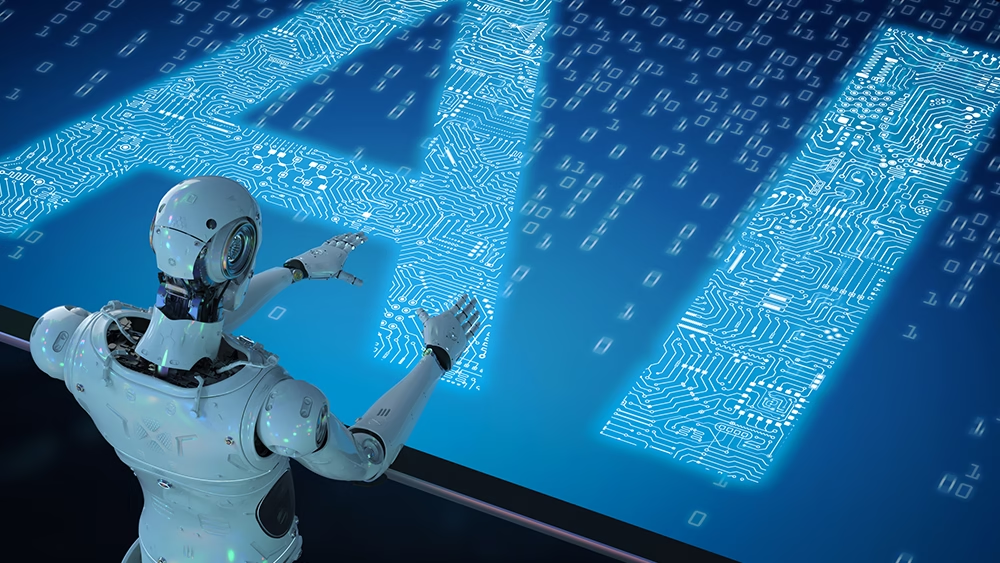Introduction
Artificial Intelligence (AI) and automation have revolutionized the modern workplace, fundamentally altering how businesses operate. From increasing efficiency to raising concerns about job displacement, AI-driven automation presents both opportunities and challenges. This paper explores the pros and cons of AI-driven automation in the workplace, highlighting its impact on productivity, employment, ethical considerations, and the future of work.
The Rise of AI-Driven Automation
AI-driven automation refers to the integration of artificial intelligence technologies in various workplace functions, replacing or augmenting human efforts. This technological advancement has gained momentum across industries, from manufacturing and healthcare to finance and customer service. Key components of AI-driven automation include machine learning, natural language processing, robotics, and predictive analytics.
Pros of AI-Driven Automation in the Workplace
1. Increased Efficiency and Productivity
One of the most significant advantages of AI-driven automation is the enhancement of efficiency and productivity. AI-powered systems can process large volumes of data at unprecedented speeds, allowing businesses to streamline operations and reduce manual labor. Tasks such as data entry, customer inquiries, and inventory management can be automated, freeing employees to focus on higher-value work.
2. Cost Savings
By reducing reliance on human labor for repetitive tasks, AI-driven automation lowers operational costs. Businesses can save money on salaries, benefits, and training while minimizing errors that could result in financial losses. Automation also decreases downtime in production processes, leading to increased output and profitability.
3. Improved Accuracy and Reduced Human Error
AI systems, when properly trained, can perform tasks with a higher degree of accuracy than humans. Errors in data analysis, calculations, and routine administrative work are significantly reduced, ensuring better decision-making and minimizing costly mistakes.
4. Enhanced Decision-Making Through Data Analysis
AI-driven automation enables businesses to analyze vast amounts of data in real time, uncovering insights that would be impossible for humans to process manually. This capability supports data-driven decision-making, helping companies optimize strategies, identify trends, and predict future market conditions.
5. 24/7 Availability and Scalability
Unlike human employees, AI-driven systems can operate around the clock without fatigue. This advantage is particularly beneficial in customer service, where chatbots and virtual assistants provide instant responses to inquiries. Additionally, AI automation allows businesses to scale operations efficiently without the constraints of human resources.
Cons of AI-Driven Automation in the Workplace
1. Job Displacement and Unemployment
One of the biggest concerns regarding AI-driven automation is job displacement. As machines take over routine and repetitive tasks, many workers face unemployment or the need for reskilling. Industries such as manufacturing, retail, and customer service are particularly vulnerable to workforce reductions due to automation.
2. High Implementation Costs
While AI-driven automation reduces long-term costs, its initial implementation requires significant investment. Businesses must invest in advanced technology, infrastructure, and employee training to successfully integrate AI into their operations. Small and medium-sized enterprises (SMEs) may find these costs prohibitive.
3. Ethical and Bias Concerns
AI systems are only as good as the data they are trained on. If datasets contain biases, AI can inadvertently reinforce discrimination in hiring, lending, and other decision-making processes. Ethical concerns arise when AI-driven automation leads to unfair treatment of individuals or groups based on flawed algorithms.
4. Security and Privacy Risks
AI-driven automation relies heavily on data collection and processing, making cybersecurity a major concern. Data breaches, hacking, and unauthorized access to sensitive information pose risks to businesses and individuals alike. Ensuring robust security measures is critical to preventing AI-driven automation from becoming a liability.
5. Loss of Human Touch in Customer Service
While AI chatbots and virtual assistants improve efficiency, they often lack the human touch necessary for exceptional customer service. Emotional intelligence, empathy, and complex problem-solving are qualities that AI struggles to replicate. As a result, customer satisfaction may suffer when interactions are entirely automated.
AI-Driven Automation Across Industries
1. Healthcare
AI has transformed healthcare by enabling faster diagnoses, robotic surgeries, and personalized treatment plans. However, reliance on AI raises concerns about misdiagnoses, patient privacy, and the role of human healthcare professionals in the future.
2. Manufacturing
Automation in manufacturing has improved productivity, reduced errors, and enhanced safety. However, it has also led to job losses, particularly for assembly line workers who were previously integral to the production process.
3. Finance
AI-driven automation is widely used in finance for fraud detection, risk assessment, and algorithmic trading. While these applications increase efficiency, they also introduce challenges such as biased decision-making and cybersecurity threats.
4. Retail
Retailers use AI-driven automation for inventory management, personalized marketing, and cashier-less stores. While these innovations improve customer experience, they may also lead to reduced employment opportunities in traditional retail roles.
5. Education
AI-powered tools assist in personalized learning, grading automation, and virtual tutoring. However, concerns exist regarding data privacy, the digital divide, and the potential for AI to replace human educators.
The Future of AI-Driven Automation in the Workplace
The future of AI-driven automation is a double-edged sword. On one hand, continued advancements in AI will lead to greater efficiencies, innovation, and new job opportunities in AI-related fields. On the other hand, concerns about job displacement, ethical considerations, and security risks must be addressed proactively.
Governments, businesses, and educational institutions must work together to create policies that support workers in adapting to AI-driven changes. Investing in reskilling and upskilling programs will help individuals transition into new roles that complement AI rather than compete with it.
Conclusion
AI-driven automation in the workplace presents both significant benefits and substantial challenges. While it enhances efficiency, accuracy, and cost-effectiveness, it also raises concerns about job displacement, ethics, and security. The key to a successful integration of AI in the workplace lies in balancing technological advancements with human-centered policies that promote fairness, security, and sustainability. By addressing these challenges head-on, businesses and workers can thrive in an increasingly AI-driven world.
